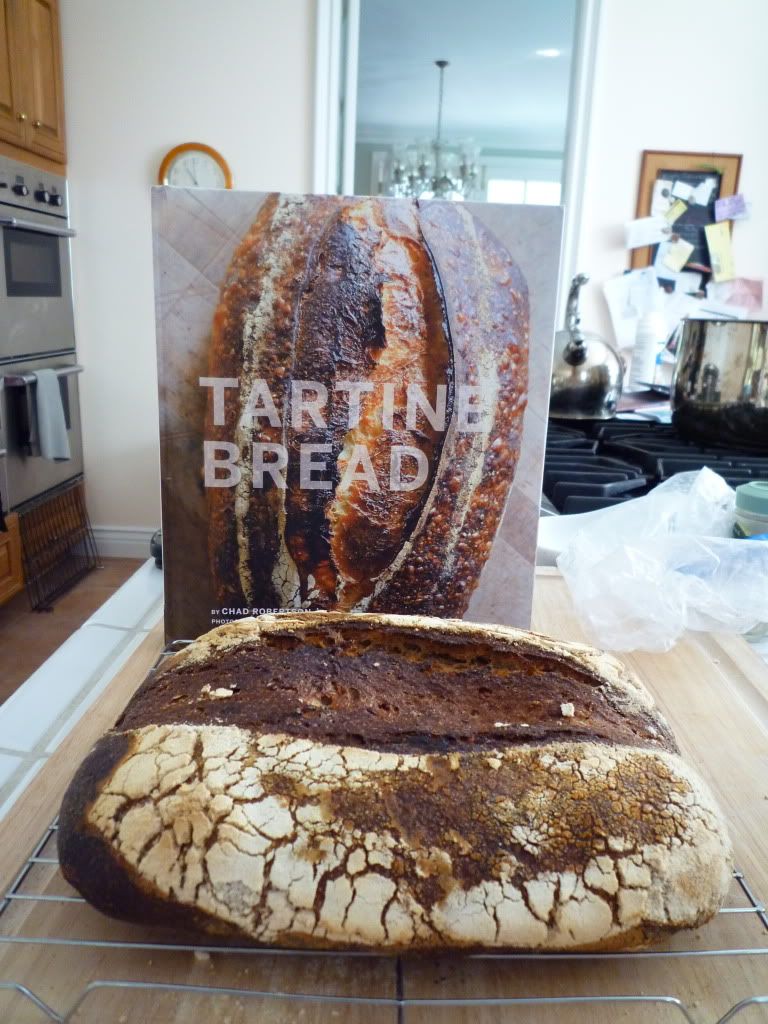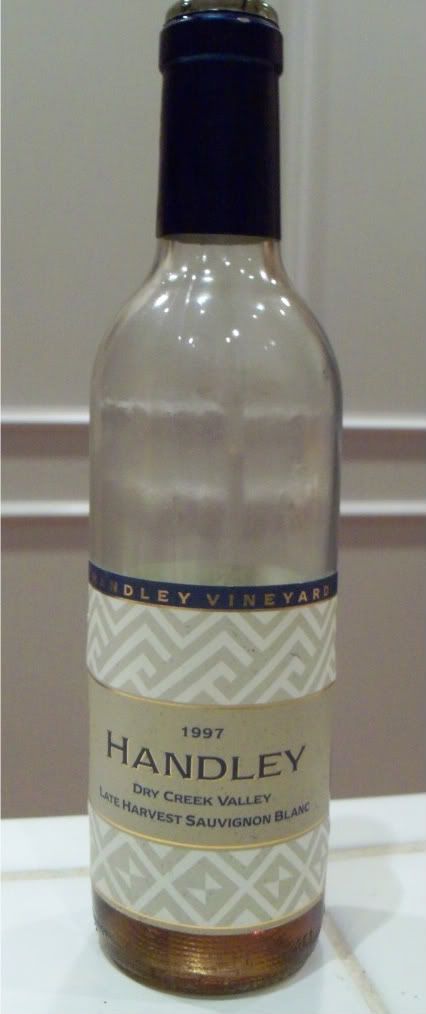 |
| Servia scored this loaf rather nicely. |
This week I had two, count them two, unsuccessful attempts at
Pain de Campagne. However, each unsuccessful loaf provided (1) a vital learning opportunity and (2) some good food.
Loaf 1: The Song of the Bread.
Having read a lot of writing on bread, one of the things that comes up is the mythical crackling of the perfect artisan crust as the baker removes it from the oven. It supposedly has something to do with the quick change in temperature as the bread comes from the hot oven into the cold air and is reputedly the mark of a perfect loaf for some bakers. I have never had a loaf crackle as it comes out of the oven until two days ago. I accidentally left it proofing for a little too long so the bread flattened out and had pretty much no oven spring (and no irregular holes). However, for the first time ever, when I took the bread out of the oven, it began to sing. I heard a veritable orchestra of crackling crust! It was amazing. Then I opened up the bread and realized that
I had forgotten the salt #epicfail. Anyway, although it was overproofed, it was light and airy and it made
fantastic croutons (thanks, Servia). I realized not only that I had proofed it too long butthe lack of salt meant that the bread proofed even faster than it would have otherwise. Oops.
 |
| Singing crust |
 |
| Bread overproofed...it flattened like a pancake |
 |
| Crust & Crumb |
 |
| Crumb shot |
Loaf 2: Shaping Method and the Poke Test
I couldn't let this loaf go. I wanted to perfect it, so I tried again. I still did not manage. I realized that my only effective shaping method is the one I have been practicing on my beautiful loaves of Tartine bread. The problem is that I think my Pain de Campagne loaf might be too delicate/not high enough hydration for this kind of handling. Anyway, a combination of that and a my incorrect assessment of the poke test (and resulting in overproofing) caused a very strange crumb. The bread was light and had a moist, creamy texture, but the crumb was aesthetically displeasing. I will try this bread again over the next few weeks until I perfect it. I am determined to make it work. Sadly, this crust did not sing.
 |
| Crust...moving forward. |
 |
| Servia scored this. managed a nice ear. |
 |
| Really strange crumb |
Note: the poke test is a test to determine whether the bread has finished it's final proofing. If you poke the bread and it rises back up quickly, it's not done. if it rises very slowly, it has finished proofing. I still don't quite understand the magical point in this test where you know whether the bread is re-rising slow enough. I think I misread it though.
My uncle and aunt surprised us by coming into town bringing a variety of California wines and extremely impressive viticulture knowledge. I have already started to attempt to siphon off some of their expertise and I will try to relate what I am learning in future editions of Wine Snob






 , and I modified it here.
, and I modified it here.

































